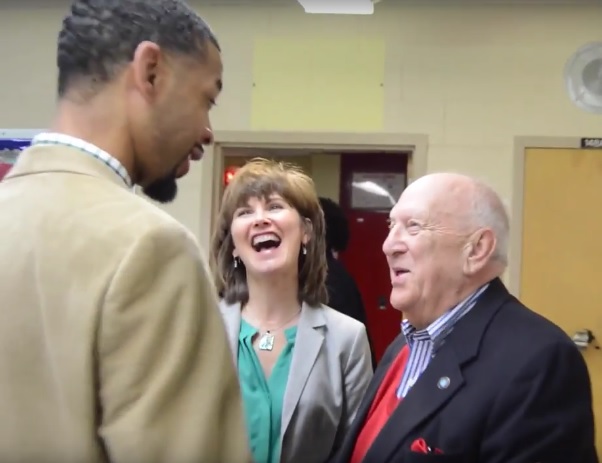by Brenda Campbell, President and CEO, Make A Difference – Wisconsin
By many accounts, I’m a numbers person. I love to see the quantitative results from surveys and research. I geek out over trend stories and science podcasts.
So naturally, I’m thrilled that we’ve hit our 10th programming year and surpassed reaching 50,000 “money smart” teens in the process. I feel empowered that we can tabulate the high percentages of outcomes from our Money Sense and Money Coach programs, and that our team can share a factual impact teens take from lessons on budgeting, saving, credit and more.
 As much as these milestone numbers feel impressive, I know they’re important because of their qualitative impact on people like Brittany.
As much as these milestone numbers feel impressive, I know they’re important because of their qualitative impact on people like Brittany.
Brittany participated in our financial literacy lessons in 2007-08, during our second programming year. Back then, we had just one financial literacy program and it didn’t even have a name (it’s now known as Money Sense). At that time, Brittany was a 10th grader at Bradley Tech H.S. With our program really hitting its stride in that second programming year, I was consumed in making sure we provided a valuable financial education for students, so I don’t recall meeting Brittany during her time in our course. But she remembered our course.
This spring, I reached out to Brittany via Facebook, something that hardly existed 10 years ago, after compiling a list of alum with various educators and volunteers from our early years. With our annual behavioral-focused outcomes, I know the change we make over the course of our programs in a single school year. But what is the role our financial education program plays months, years and almost a decade later?
To Brittany, it came back to her like a car crash, quite literally. A married mother of two still living in Milwaukee and working as a CNA, Brittany told me in a phone call that she took our lessons to heart. One of those lessons was to set aside money for emergency savings. Eight years later, this dedication to saving for a “rainy day” came just when she needed it, as she was involved in a two-car collision. Luckily, she was okay and no one was seriously hurt. The other driver, as it turned out, was not insured, and that could have left Brittany without the car she relied on every day. Smartly, Brittany had kept on top of her emergency savings for years. She told me she was able to quickly pay for vehicle repairs from her emergency fund. This also kept her out of that cascading series of financial problems that so often plagues those who don’t have a financial windfall. I felt absolutely touched that she not only took in information from our lessons so many years ago, but continues to apply it to her life.
My call with Brittany was one of many conversations I had with students past and present, volunteers, supporters and other education leaders during these last few months (as seen in the picture above, where I’m sharing a laugh with volunteer Dion Saffold, left, and our founder, Lloyd Levin). You can catch some of that in a video we did that followed our founder, Lloyd Levin, as he reflected on the impact of a decade in financial education. As we enter our 10th program year, there’s a slate of new initiatives we’re launching based on both the student/volunteer/educator input and the proven quantitative results. Please visit our dedicated 10th Anniversary landing page and check out our newsletters for all the latest in our exciting expansion.
It’s this life-changing impact of our programs shared by students and facilitated by volunteers and educators that give value to the numbers behind our anniversary. In truth, it’s my hope that our financial education programs aren’t needed 10 years from today. I would rather financial literacy be treated as something every teenager is guaranteed to learn from educators, experiences, business leaders and families. As it stands, teens are not guaranteed that important financial guidance, which I see as critical for teens about to begin their own lives as adults. As Brittany proved with her lifelong savings practices, it’s an emergency that all of us have a role in helping teens prepare for.



